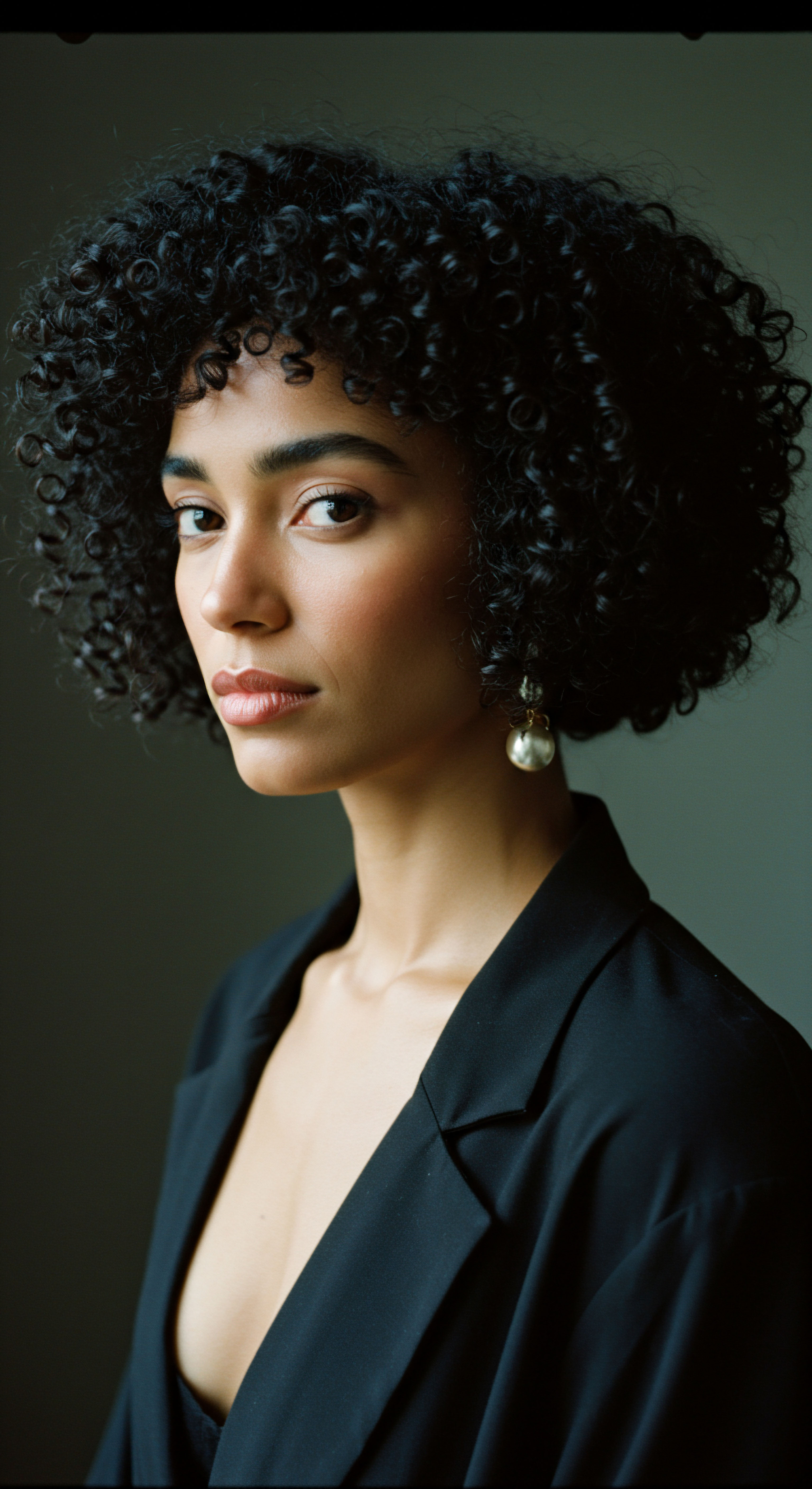
Roots
The whisper of hair against a silk pillow, the playful spring of a curl, the steady weight of a well-tended coil—these intimate sensations hint at something far deeper than mere aesthetics. Our hair, in its countless textures, holds a silent dialogue with who we are, speaking to personal history, collective memory, and the very ground of our being. For those with textured hair, this conversation often carries layers of meaning, reflecting not only biology but also cultural narratives that stretch back through generations. Understanding how our hair grows, what makes it unique, and the words we use to describe it forms the initial step in truly knowing ourselves, allowing us to move beyond superficial appearance and toward a deeper, more resonant self-perception.

Hair Anatomy and Physiology Specific to Textured Hair
At its fundamental level, each strand of hair is a marvel of biological engineering, a testament to the body’s subtle workings. Human hair consists of two main structures ❉ the hair shaft, which is the visible portion above the skin, and the hair follicle, nestled beneath the surface. The follicle, a living entity, anchors the hair and determines its growth. The hair shaft, though seemingly simple, comprises three distinct layers ❉ the medulla, the cortex, and the cuticle.
The medulla forms the innermost core, often absent in finer hair. Surrounding it is the Cortex, the primary determinant of hair’s strength, elasticity, and color, holding the pigments that lend each strand its unique hue. The outermost layer, the Cuticle, consists of overlapping, scale-like cells that protect the inner cortex, much like shingles on a roof.
For textured hair, particularly hair of African descent, these anatomical elements exhibit distinct characteristics. While straight hair typically emerges from a round follicle, textured hair often originates from an Elliptical or Oval-Shaped Follicle. This unique shape causes the hair strand itself to be flat or ribbon-like in cross-section, rather than perfectly round. This flattened structure, combined with the uneven distribution of keratin proteins and disulfide bonds within the cortex, compels the hair to curl, coil, or zigzag as it grows.
The more pronounced the elliptical shape and the more uneven the keratin distribution, the tighter the curl pattern tends to be. This inherent structural difference also means textured hair often possesses more disulfide bonds than other hair types, contributing to its distinct curl memory and resilience.
The elliptical shape of the hair follicle profoundly influences the curl pattern, making textured hair a marvel of natural design.

Textured Hair Classification Systems
To navigate the diverse world of textured hair, various classification systems have emerged, offering a framework for understanding curl patterns. While no single system perfectly captures the infinite variations, they serve as helpful guides for care and styling. The most widely recognized system categorizes hair into types 1 (straight), 2 (wavy), 3 (curly), and 4 (coily), with further sub-classifications (a, b, c) indicating increasing tightness of the curl.
- Type 2 Hair ❉ Ranges from a gentle wave (2a) to a more defined S-shape (2c). These strands typically lie closer to the head and possess a softer texture.
- Type 3 Hair ❉ Characterized by distinct curls that form a loose loop (3a) to a tight corkscrew (3c). This hair type often has significant volume and a noticeable bounce.
- Type 4 Hair ❉ Exhibits the tightest curl patterns, from tight corkscrews (4a) to wiry, zigzag patterns (4b and 4c). This hair type is known for its incredible shrinkage and can appear much shorter than its actual length.
While these classifications provide a starting point, it is worth noting that one individual may possess multiple curl patterns on their head, defying rigid categorization. The value of these systems lies in their ability to help individuals identify general characteristics that influence product choices and styling techniques, rather than serving as definitive labels.

The Essential Lexicon of Textured Hair
A specific vocabulary has grown around textured hair, reflecting its unique needs and the specialized care it requires. Familiarity with these terms deepens one’s understanding of hair health and effective maintenance.
| Term Porosity |
| Meaning The hair's ability to absorb and retain moisture. High porosity hair has open cuticles, absorbing moisture quickly but losing it just as fast. Low porosity hair has tightly closed cuticles, resisting moisture absorption but retaining it well once hydrated. |
| Term Density |
| Meaning The number of individual hair strands on one's head. This influences how full the hair appears and how much product is needed. |
| Term Elasticity |
| Meaning The hair's ability to stretch and return to its original state without breaking. Healthy elasticity indicates good protein-moisture balance. |
| Term Co-washing |
| Meaning Cleansing hair with conditioner only, rather than shampoo, to preserve natural oils and moisture. |
| Term Detangling |
| Meaning The process of carefully separating knots and tangles, often with fingers or a wide-tooth comb, typically on wet or damp hair with conditioner. |
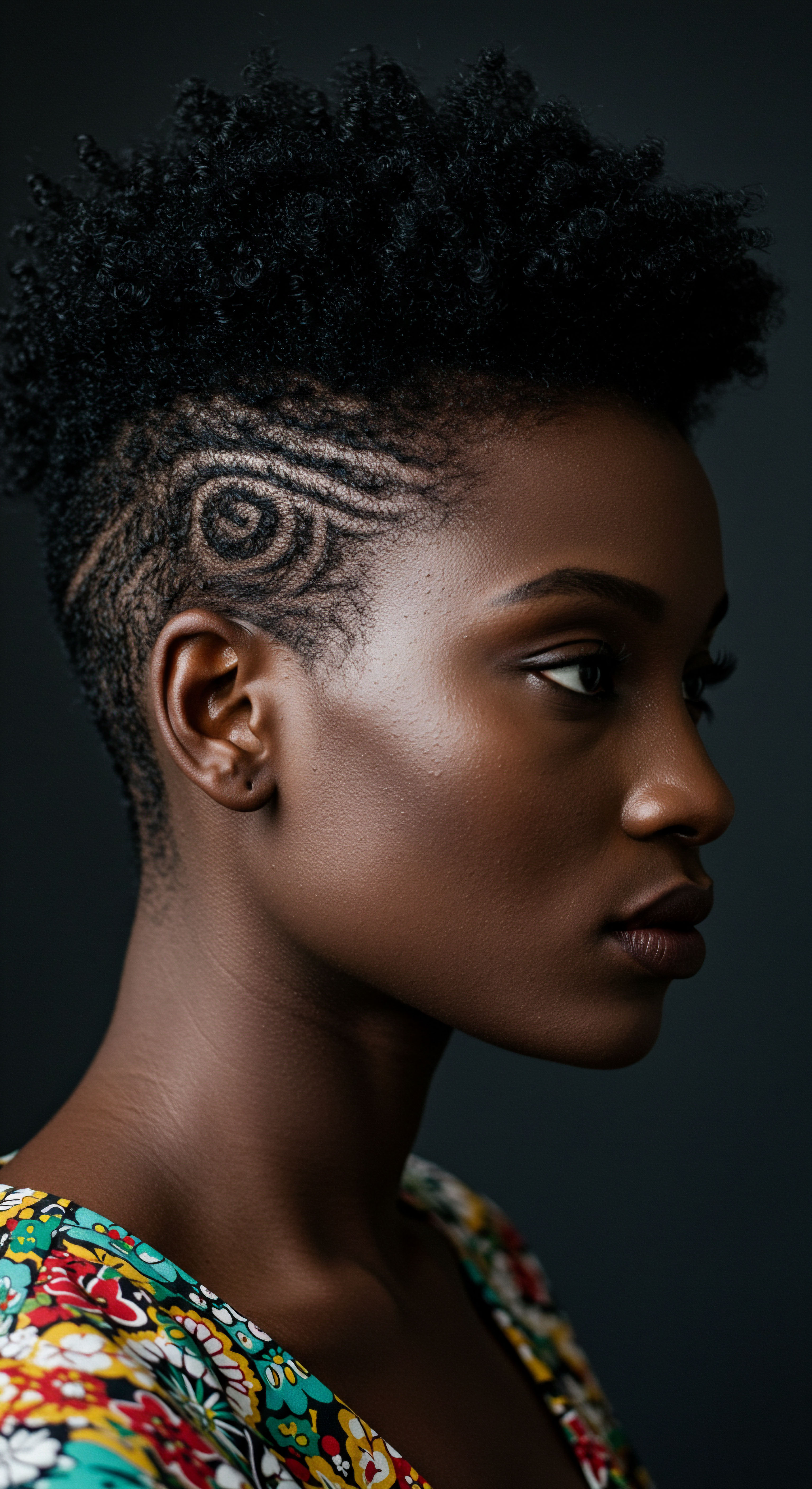
Hair Growth Cycles and Influencing Factors
Hair growth is a cyclical process, unfolding in distinct phases ❉ anagen, catagen, and telogen. Understanding these cycles helps to set realistic expectations for length retention and overall hair health. The Anagen Phase is the active growth period, where hair cells rapidly divide, pushing the hair shaft out of the follicle. This phase can last anywhere from two to eight years, and its duration largely determines the maximum length a person’s hair can achieve.
Following anagen is the brief Catagen Phase, a transitional period lasting a few weeks, during which the hair follicle shrinks and detaches from the dermal papilla. Finally, the Telogen Phase is a resting period, typically lasting a few months, after which the old hair sheds, and a new anagen hair begins to grow.
For textured hair, particular considerations exist within these cycles. While the fundamental biology remains consistent across hair types, the delicate nature of highly coiled strands can sometimes lead to perceived slower growth or reduced length retention if not cared for appropriately. Factors beyond genetics also play a role in hair health and growth.
Nutritional deficiencies, hormonal fluctuations, stress, certain medications, and environmental stressors can all impact the hair cycle, potentially leading to increased shedding or slower growth. A diet rich in vitamins, minerals, and proteins supports healthy hair growth, as does adequate hydration and stress management.
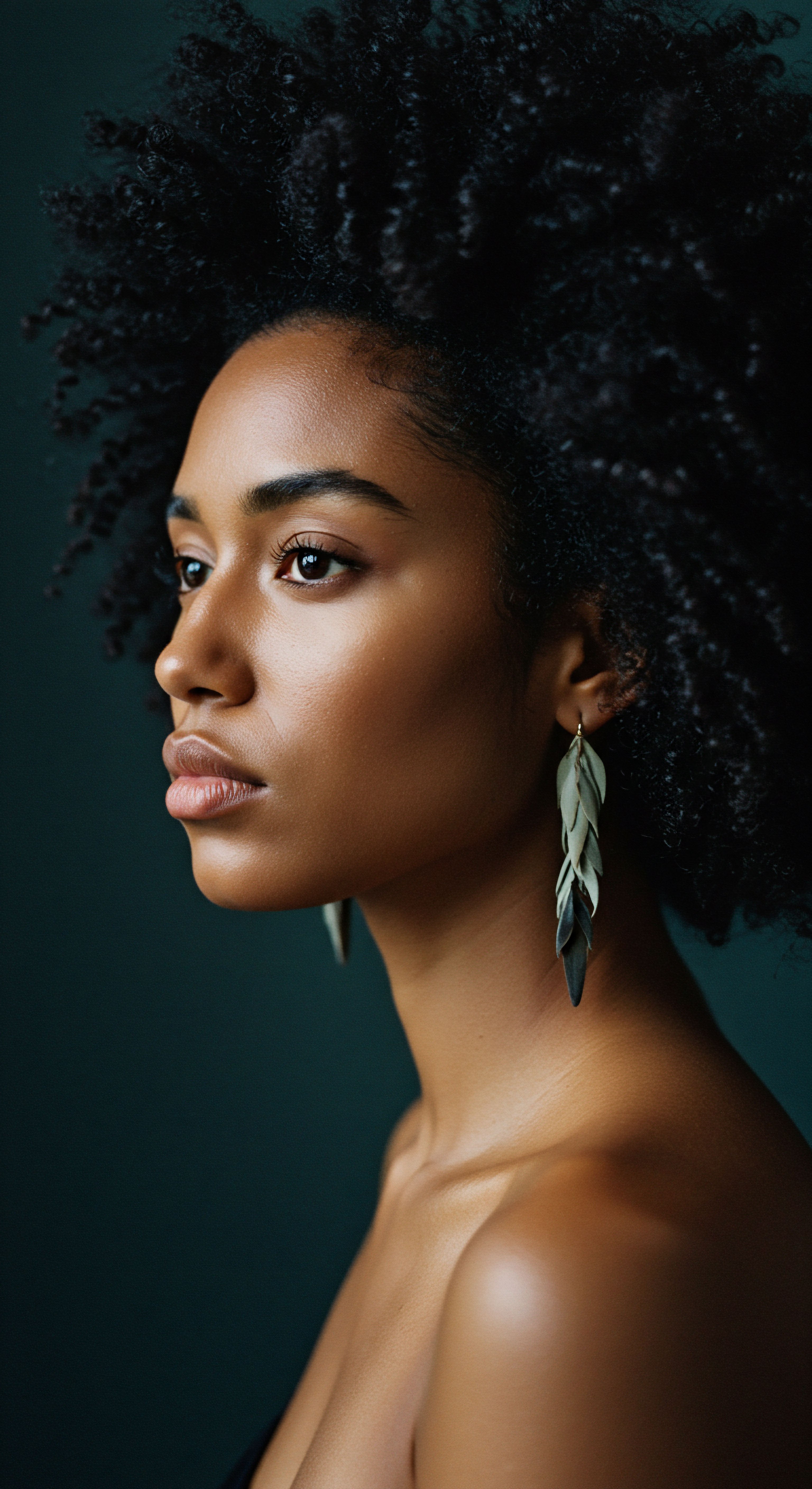
Ritual
The journey of textured hair care extends beyond mere biological understanding; it blossoms into a thoughtful practice, a daily or weekly engagement that shapes not only the health of our strands but also our sense of self. Each technique, each tool, each chosen product becomes a brushstroke in a larger canvas of personal expression and well-being. Stepping into this realm of ritual is an acknowledgment of the unique qualities of textured hair, moving with gentle intention to preserve its integrity and celebrate its inherent beauty. It is here, in the practical application of knowledge, that we truly begin to witness how our hair becomes a living extension of our identity.

Protective Styling Encyclopedia
Protective styles serve as a cornerstone of textured hair care, offering a sanctuary for delicate strands from environmental stressors and daily manipulation. These styles tuck away the hair ends, which are the oldest and most fragile parts of the hair, thereby minimizing breakage and promoting length retention.
Common protective styles include:
- Braids ❉ From classic three-strand braids to intricate cornrows and box braids, these styles keep hair neatly contained and protected. They can be worn with or without added hair, offering immense versatility.
- Twists ❉ Two-strand twists, flat twists, and Senegalese twists provide a gentle alternative to braids, often resulting in softer curl patterns when unraveled.
- Buns and Updos ❉ Simple yet effective, buns and various updos keep hair off the shoulders and neck, reducing friction and potential damage.
The key to effective protective styling lies in ensuring the style is not too tight, as excessive tension can lead to traction alopecia, a form of hair loss. The choice of a protective style often aligns with one’s lifestyle, professional needs, and desired aesthetic, reflecting a personal balance between practicality and self-expression.

Natural Styling and Definition Techniques
For those who prefer to wear their texture openly, a range of techniques exists to enhance curl definition and volume. These methods celebrate the natural form of the hair, allowing its unique pattern to shine.
Consider these popular approaches:
- Wash-And-Go ❉ This method involves cleansing, conditioning, and applying styling products to wet hair, then allowing it to air dry or diffuse, encouraging natural curl clumps to form.
- Twist-Outs and Braid-Outs ❉ Hair is sectioned, twisted or braided while damp, allowed to dry completely, and then carefully unraveled to reveal defined, elongated curls or waves.
- Shingling ❉ A meticulous technique where a small amount of product is applied to tiny sections of wet hair, individually defining each curl with the fingers.
Mastering these techniques requires patience and an understanding of one’s specific curl pattern and porosity. The products chosen, such as curl creams, gels, and mousses, play a significant role in achieving desired hold and definition without stiffness.
The deliberate choice of styling methods, whether protective or openly expressive, transforms hair care into a personal statement.

Wigs and Hair Extensions Mastery
Wigs and hair extensions have long held a significant place in the world of textured hair, serving multiple purposes from protective styling to dramatic transformations of appearance. They offer unparalleled versatility, allowing individuals to experiment with different lengths, colors, and textures without altering their natural hair. For many, wigs provide a convenient way to protect their natural strands from daily manipulation, heat, and environmental exposure, promoting underlying hair health.
The artistry involved in selecting, customizing, and maintaining wigs and extensions is a skill in itself. From human hair wigs that offer a seamless, natural look to synthetic options providing vibrant colors and diverse styles, the possibilities are vast. Understanding proper installation techniques, such as braiding down natural hair to create a flat base for wigs or securing extensions without causing tension, is crucial for both aesthetic appeal and hair preservation. The ability to switch between looks with ease offers a powerful form of self-expression, allowing one to present different facets of their identity depending on mood, occasion, or desire.

Heat Styling and Thermal Reconditioning
While celebrating natural texture is paramount, heat styling and thermal reconditioning remain viable options for those seeking temporary or semi-permanent alterations to their curl pattern. These methods, when approached with caution and knowledge, can expand styling possibilities. However, a Safety-First Approach is absolutely necessary to prevent damage.
Heat styling, such as blow-drying, flat-ironing, or curling with hot tools, temporarily straightens or smooths the hair by breaking hydrogen bonds. Thermal reconditioning, a chemical process combined with heat, permanently alters the hair’s disulfide bonds, resulting in straight hair. The high heat required for these processes can lead to significant moisture loss, protein damage, and even irreversible alteration of the curl pattern, known as heat damage, if not managed properly.
To mitigate risks:
- Use Heat Protectants ❉ These products create a barrier between the hair and heat, minimizing direct damage.
- Opt for Lower Temperatures ❉ Use the lowest effective heat setting for your hair type.
- Limit Frequency ❉ Reserve heat styling for special occasions rather than daily practice.
- Deep Condition Regularly ❉ Replenish moisture and strengthen hair after heat application.
The choice to heat style is a personal one, often influenced by societal beauty standards or a desire for variety. Understanding the science behind heat’s impact empowers individuals to make informed decisions that prioritize the long-term health of their hair.

The Complete Textured Hair Toolkit
A well-equipped toolkit is essential for effective textured hair care, transforming daily routines into gentle, productive sessions. The right tools minimize breakage, aid in detangling, and help achieve desired styles.
| Tool Wide-Tooth Comb |
| Purpose Ideal for detangling wet hair, starting from the ends and working upwards to prevent breakage. |
| Tool Denman Brush or Similar Detangling Brush |
| Purpose Excellent for clumping curls and providing definition, especially when used on wet hair with styling products. |
| Tool Spray Bottle |
| Purpose Used to dampen hair for styling or refreshing curls without fully saturating. |
| Tool Microfiber Towel or Old T-shirt |
| Purpose Reduces frizz and minimizes friction compared to traditional terrycloth towels when drying. |
| Tool Satin or Silk Scarf/Bonnet |
| Purpose Protects hair overnight by reducing friction and preserving moisture. |
| Tool Selecting the right tools is a foundational step in a healthy hair care practice. |
Investing in quality tools designed for textured hair can significantly improve the health and manageability of strands, making the hair care ritual a more pleasant and effective experience. Each tool plays a specific role in respecting the delicate nature of curls and coils.
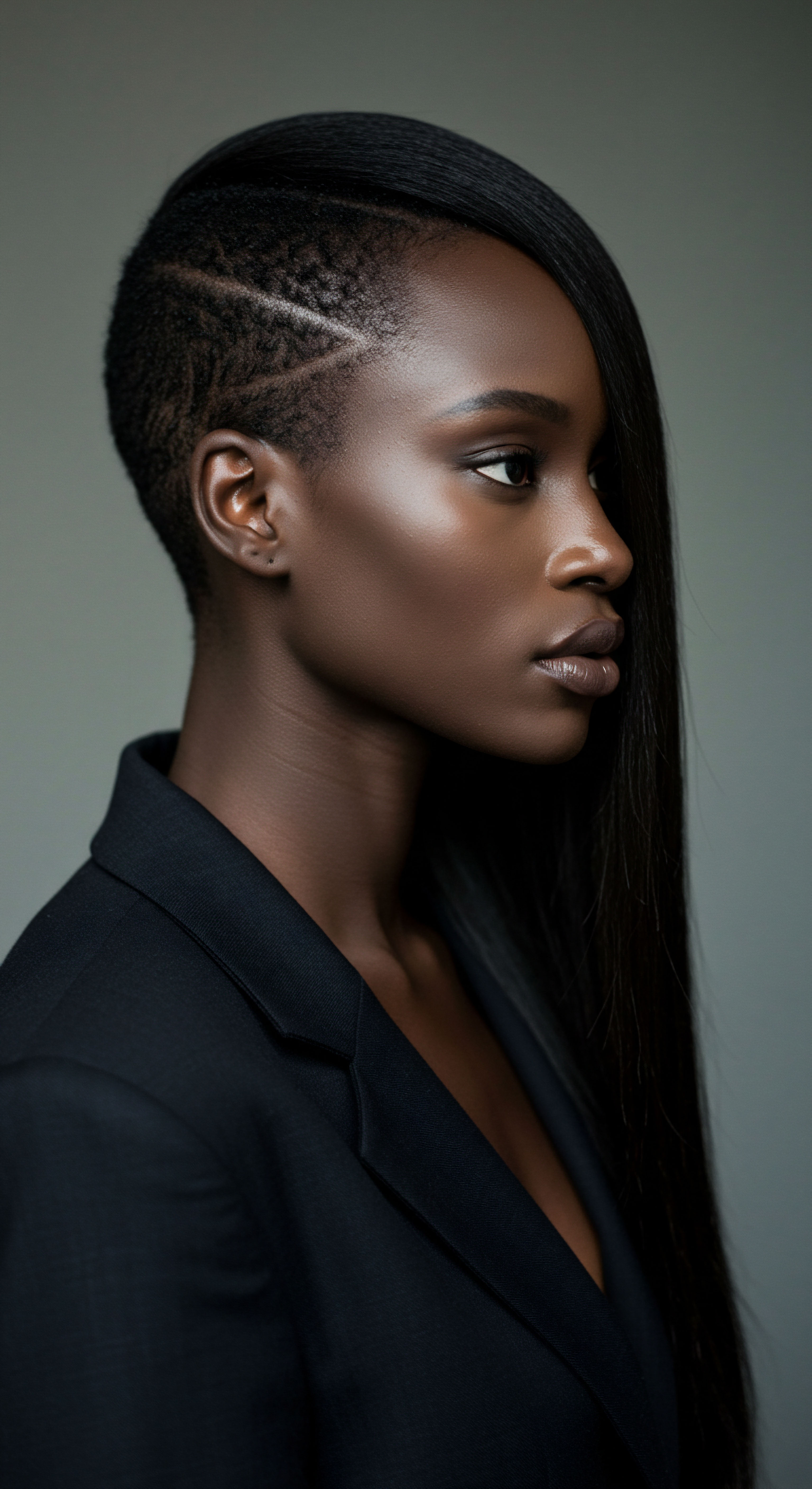
Relay
Beyond the visible contours of curls and coils, hair texture carries a profound weight of meaning, acting as a silent, yet powerful, signifier of identity. It speaks to cultural heritage, social standing, and individual psychology, often in ways that defy simple explanation. To truly comprehend how hair texture shapes who we are, we must step into a more expansive view, one that recognizes the intricate interplay of biology, history, and lived experience. This section delves into these deeper currents, examining the systemic pressures and personal triumphs that define the textured hair experience, grounding our exploration in compelling insights that reveal the complex layers beneath the surface.
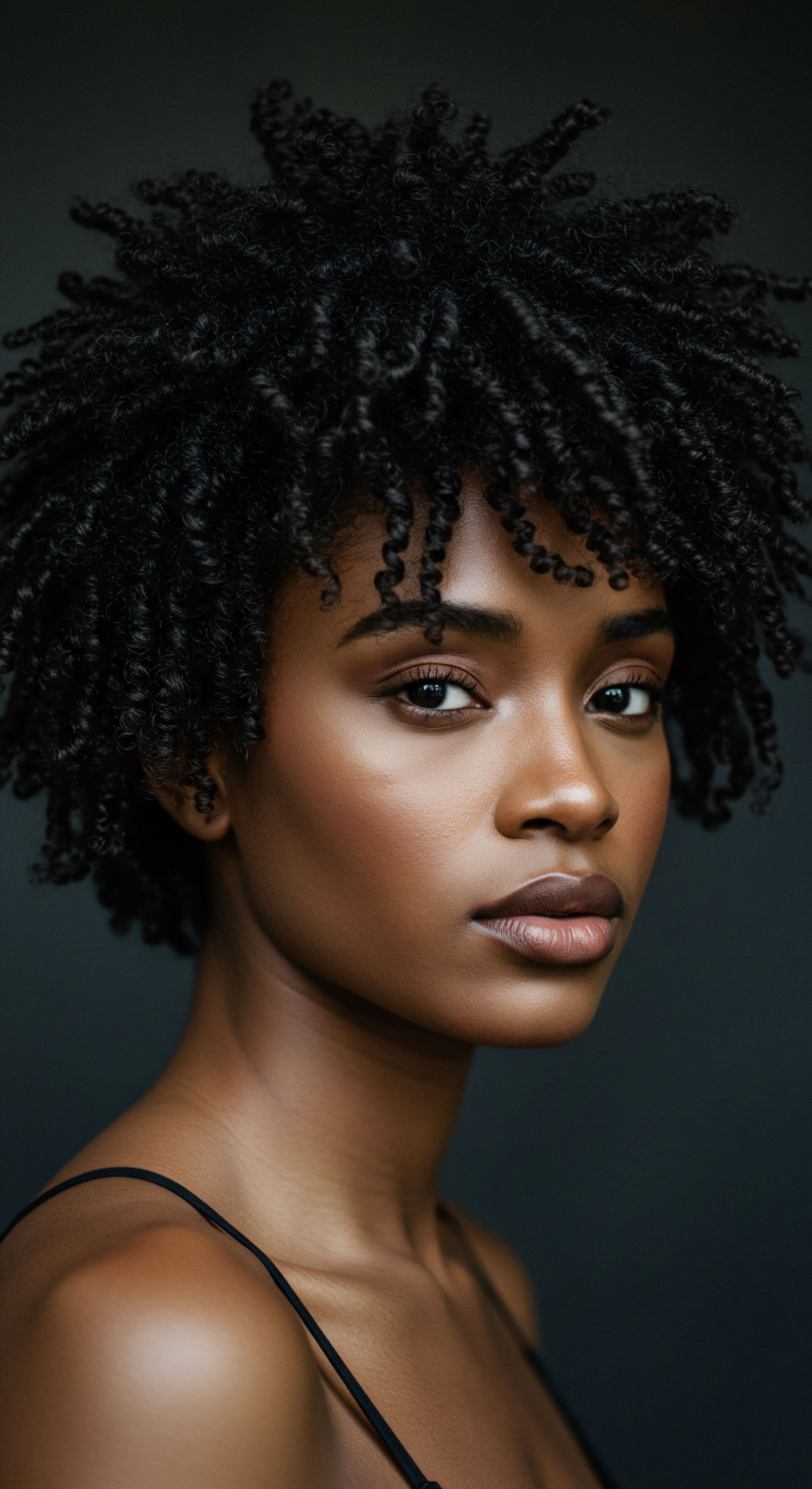
The Weight of Perception How Does Hair Texture Influence Social Acceptance?
The relationship between hair texture and social acceptance is a complex one, often fraught with historical biases and contemporary challenges. For individuals with highly textured hair, particularly those of African descent, hair has historically been, and continues to be, a site of both pride and prejudice. Societal beauty standards, often rooted in Eurocentric ideals, have long privileged straight hair, leading to pervasive discrimination against natural textures.
Research consistently highlights the adverse psychological impact of hair discrimination. A 2023 commentary in PMC, supporting anti-hair discrimination laws, refers to hair discrimination as an “esthetic trauma,” noting its dire mental health effects. This includes anxiety, changes in self-esteem, and alterations in self-identity. The study underscores how negative stereotypes, such as natural hair being perceived as “unprofessional” or “unruly,” can lead to heightened and prolonged stress responses, affecting perceptions of beauty and self-worth.
Children, too, face hair-bullying in schools, perpetuated through peer interactions and even school appearance policies. Such experiences can significantly influence self-image and belonging from an early age, compelling individuals to chemically straighten their hair to avoid discrimination, a process that can be both physically and psychologically damaging.
Consider the economic implications of this bias. A 2023 study published in PMC on the “Minority Hair Tax” revealed that haircare products tailored for coily and curly hair types were significantly more expensive per ounce compared to products for straight hair types. This price disparity, alongside a broader “texture gap” in research and development within the beauty industry, means consumers with Type 4 hair often face suboptimal choices that can impact their health and finances. This data point, often overlooked, illuminates a systemic issue ❉ the market itself, by pricing textured hair products higher and under-serving this demographic, implicitly reinforces the societal pressure to conform to less costly, and often less healthy, hair practices.
Societal perceptions of textured hair, often shaped by historical biases, extend beyond aesthetics, impacting mental well-being and economic realities.
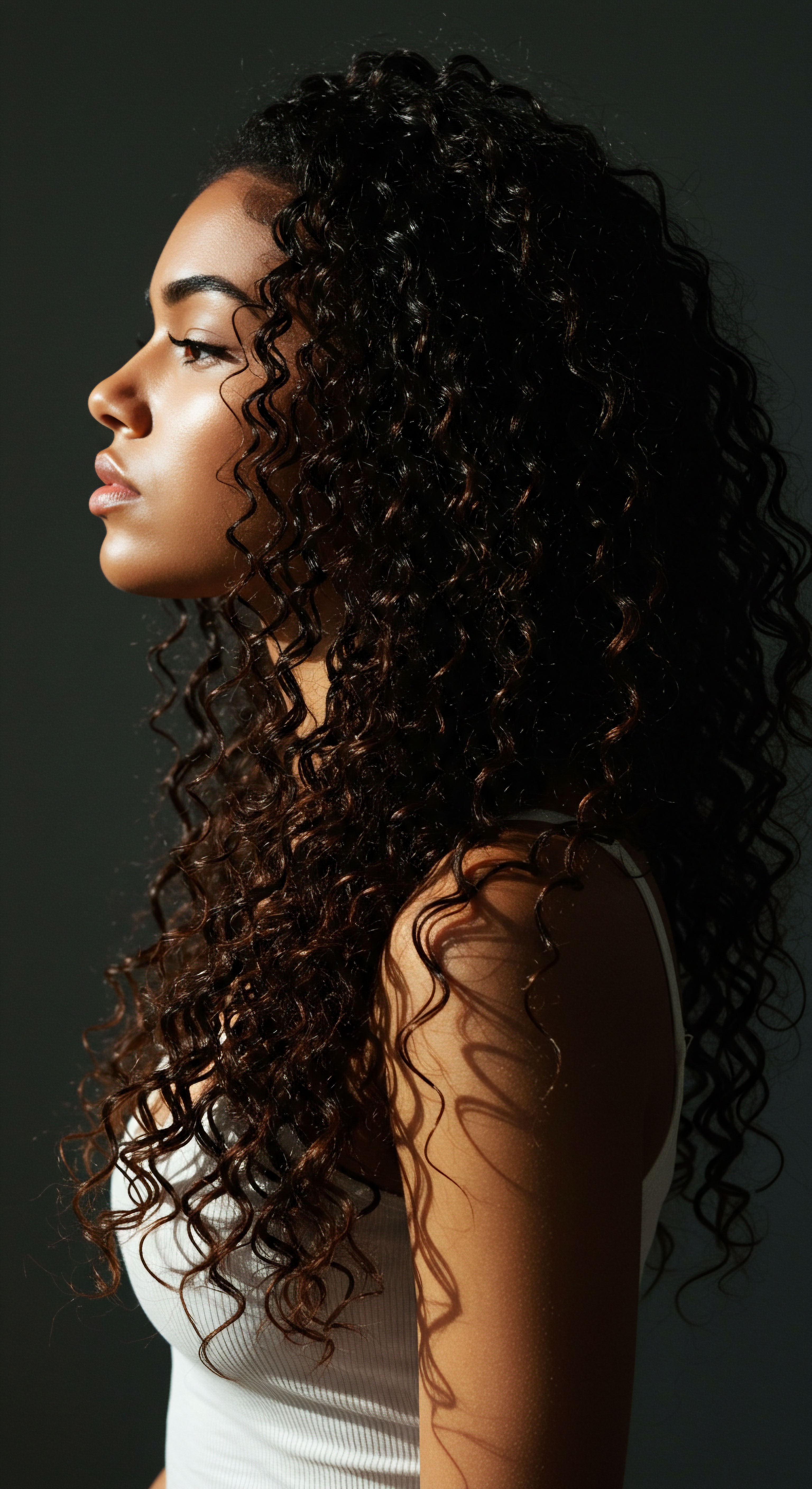
Cultural Roots and Personal Narratives What Does Hair Tell Us About Heritage?
The personal stories woven into hair texture are deeply intertwined with cultural heritage, creating a rich tapestry of identity. For many, particularly within the African diaspora, hair serves as a living archive, carrying histories of resistance, resilience, and celebration. In pre-colonial African societies, hairstyles communicated social status, tribal affiliation, marital status, and even conveyed secret messages during times of adversity. The intricate patterns of cornrows, for instance, were used to depict maps to freedom during the transatlantic slave trade.
The act of styling textured hair often transcends mere grooming; it becomes a ritualistic connection to ancestry and community. Sharing hair care practices within families, passing down techniques and knowledge from one generation to the next, strengthens familial bonds and reinforces cultural identity. The decision to wear natural hair, especially in contemporary society, can be a powerful statement of self-acceptance and a rejection of imposed beauty standards. It signifies a reclaiming of heritage and a celebration of authentic selfhood, echoing movements like “Black is Beautiful” that championed natural hair in the 1960s.
The psychological impact of this cultural connection is profound. Embracing one’s natural texture can lead to increased confidence and a stronger sense of belonging. Conversely, pressure to conform to Eurocentric beauty ideals can lead to a sense of cultural disconnection and internalized racism. This ongoing tension highlights the complex interplay between individual choice, societal expectation, and ancestral legacy, all expressed through the medium of hair.

The Science of Self-Perception How Does Hair Influence Our Inner World?
Beyond external perceptions and cultural connections, hair texture plays a significant role in shaping our inner world, influencing self-perception and psychological well-being. The way we feel about our hair often mirrors how we feel about ourselves, acting as a barometer for self-confidence.
Psychological studies affirm that hair is inextricably linked to self-esteem and body image. A “good hair day” can boost morale and improve mood, while a “bad hair day” can lead to feelings of insecurity. This connection is particularly pronounced for those with textured hair, who may have navigated years of societal pressure to alter their natural state. The journey of learning to care for and appreciate one’s unique texture can be a transformative experience, fostering a deeper sense of self-acceptance and personal agency.
The physical properties of textured hair, such as its propensity for shrinkage or its need for specific moisture regimens, require a different approach to care. This necessitates a conscious effort to understand one’s hair on a scientific level, becoming an active participant in its health. This understanding, in turn, translates into a greater sense of control and mastery, contributing to a more positive self-image.
When individuals understand the science behind their hair’s behavior, they are better equipped to address its needs, leading to healthier strands and a more confident outlook. This engagement with the unique properties of textured hair fosters a profound connection to one’s physical self, reinforcing the idea that beauty lies in authenticity and informed care.
| Dimension Cultural Affiliation |
| Influence on Identity Connects individuals to ancestral traditions, community practices, and historical narratives. |
| Dimension Social Expression |
| Influence on Identity Communicates personal style, values, and affiliations within societal contexts. |
| Dimension Psychological Well-being |
| Influence on Identity Impacts self-esteem, confidence, and overall self-perception through daily experiences and societal feedback. |
| Dimension Personal Autonomy |
| Influence on Identity The choice to wear hair naturally or in various styles asserts individual agency and resistance to conformity. |
| Dimension Hair texture is a multifaceted component of personal identity, influencing both internal and external worlds. |
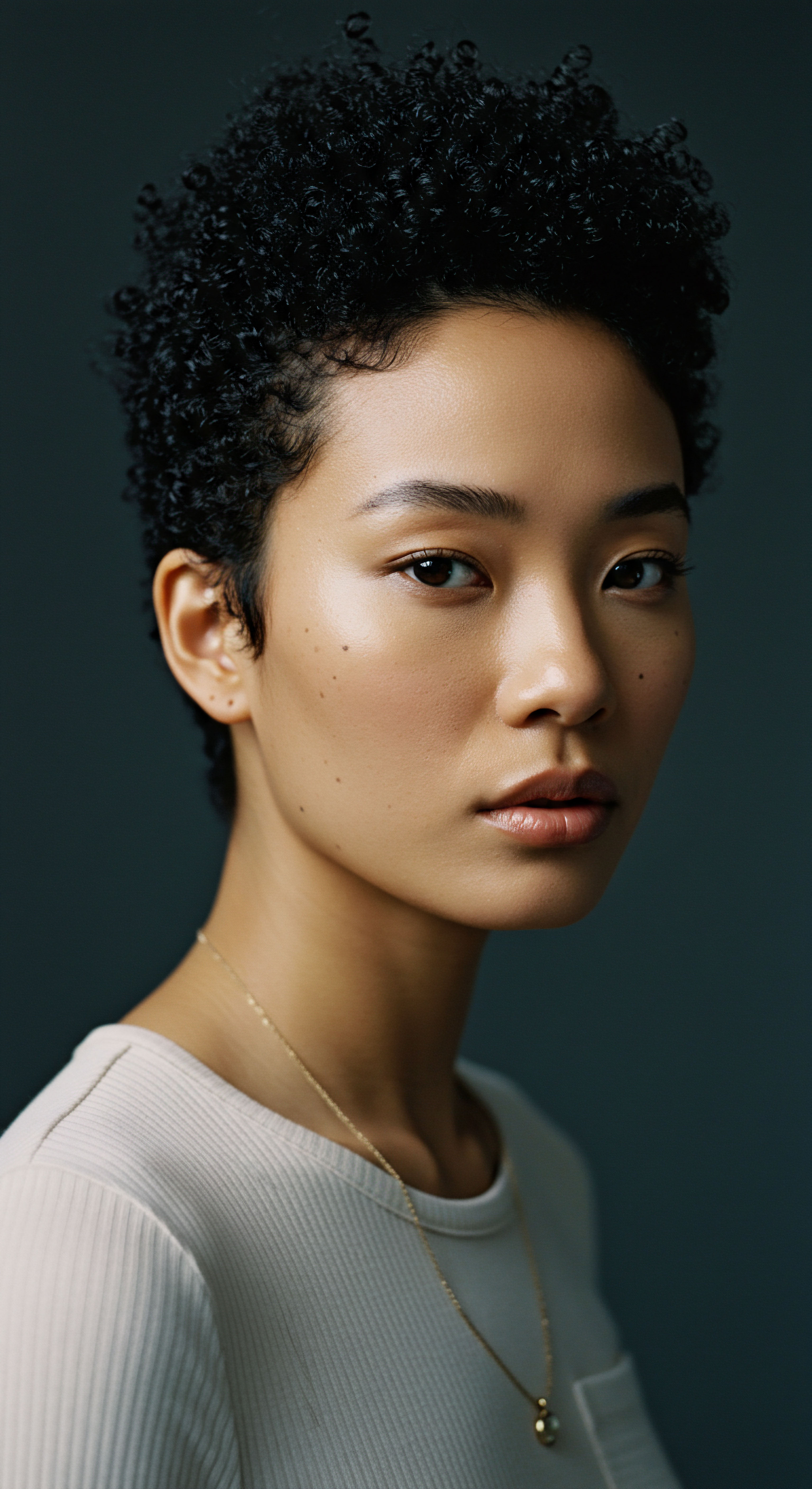
Reflection
As we step back from the intricate world of textured hair, a profound truth emerges ❉ hair is never merely hair. It is a living story, a silent witness to our journeys, and a powerful mirror reflecting the complexities of who we are. From the microscopic architecture of each strand to the grand narratives of cultural legacy and personal liberation, our hair carries a unique weight of meaning.
The deliberate choices we make in its care, the styles we choose to wear, and the way we perceive its inherent qualities all speak volumes about our relationship with ourselves and the world around us. May this understanding deepen our appreciation for every curl, coil, and wave, recognizing in each strand a quiet celebration of identity, resilience, and authentic beauty.
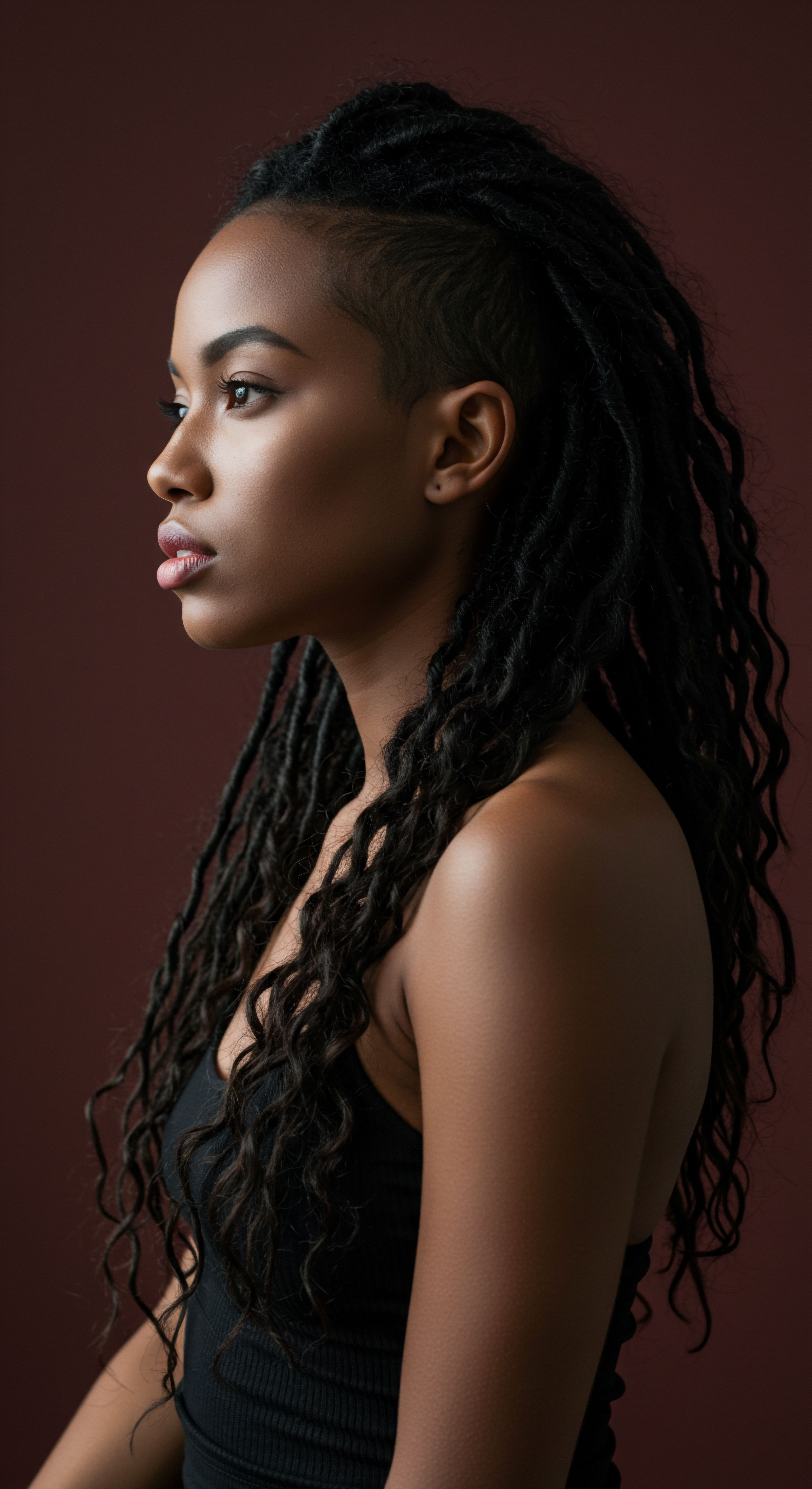
References
- Byrd, Ayana D. and Lori L. Tharps. Hair Story Untangling the Roots of Black Hair in America. St. Martin’s Griffin, 2001.
- Davis-Sivasothy, Audrey. The Science of Black Hair ❉ A Comprehensive Guide to Textured Hair Care. SAJA Publishing Company, 2011.
- Dabiri, Emma. Twisted ❉ The Tangled History of Black Hair Culture. Harper Perennial, 2020.
- Tarlo, Emma. Entanglement ❉ The Secret Lives of Hair. Oneworld Publications, 2016.
- Banks, Ingrid. Hair Matters ❉ Beauty, Power, and Black Women’s Consciousness. New York University Press, 2000.
- Rooks, Noliwe M. Hair Raising ❉ Beauty, Culture, and African American Women. Rutgers University Press, 1996.
- Cohen, David. How We See Ourselves ❉ How Psychology, Society and the Media Impact our Body Image. Routledge, 2016.
- Scheibe, Karl E. Self Studies ❉ The Psychology of Self and Identity. Praeger, 1995.
- Siegel, Daniel J. Mindsight ❉ Change Your Brain and Your Life. Bantam, 2010.
- Iscoe, Katherine E. Body Confidence ❉ The Scientific Approach on How to Shine From Within. MyFiziq, 2019.
- Nabugodi, Mathelinda. “Afro hair in the time of slavery.” University of Cambridge, 2021.
- Lewis, Marva, et al. “A Pilot Study of Childhood Experiences of Race-based Trauma from Colorism ❉ Messages of Skin Tone and Hair Type.” Tulane University, 2021.